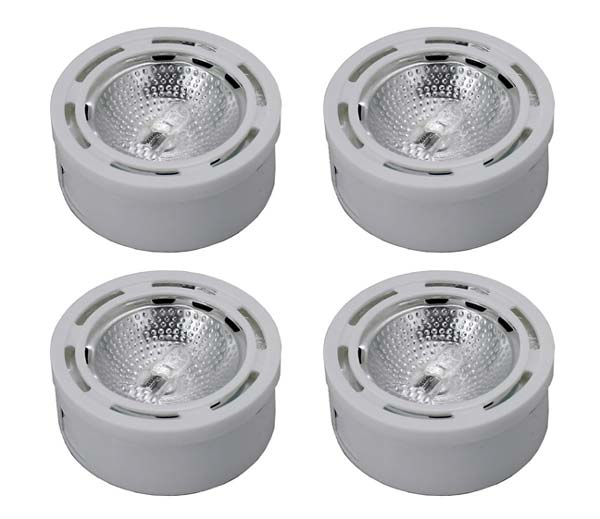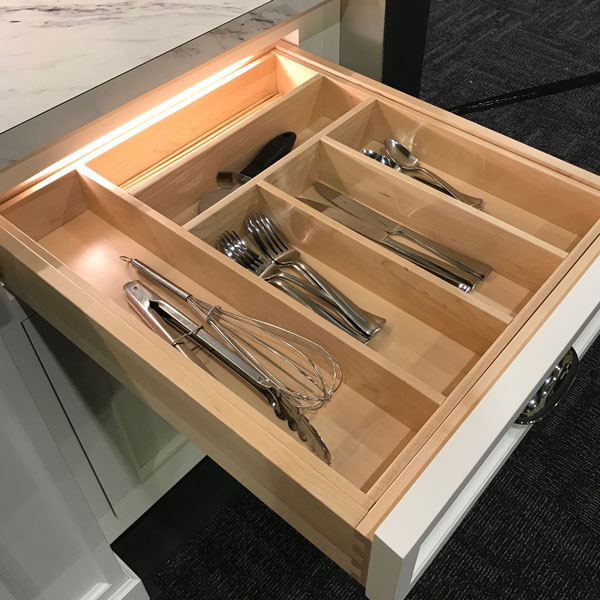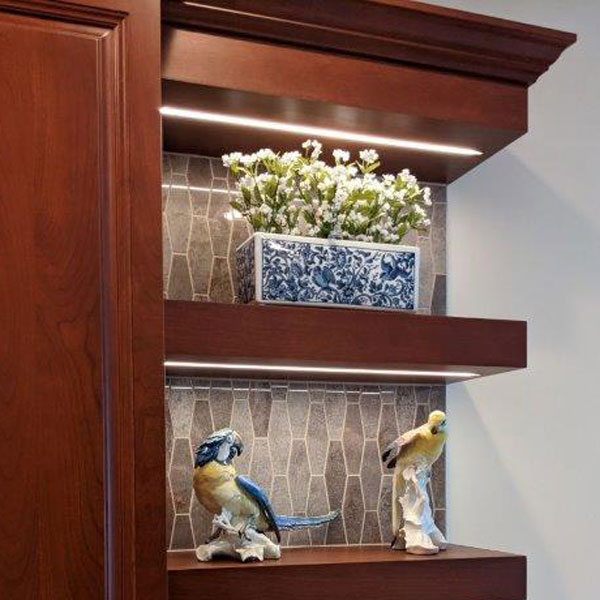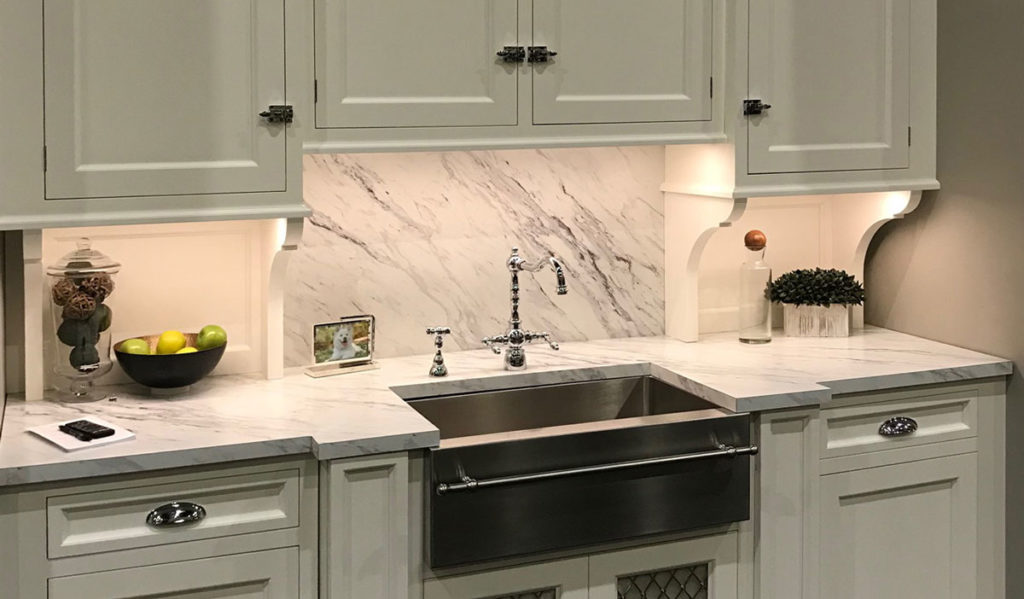It wasn’t so long ago that adding lights to the underside of upper kitchen cabinetry was seen as a luxury. Before the wide adoption of LED lighting, the most popular under-cabinet lighting solution was the use of halogen “hockey puck” lights. A major improvement over fluorescent undercabinet fixtures, halogen puck lights featured a warm hue, had no transformer noise, and weren’t as physically bulky as their fluorescent counterparts.
Strung together with one fixture under each cabinet, the puck lights ran on 12 or 24 volts and did a nice job illuminating the work surface below the cabinetry. The ability to throw light down on the countertops not only improved the usability of the work surface, it also created a warm glow to the room that ceiling lights could not accomplish.

Still, halogen lighting had several drawbacks. First, because of their inefficiency, halogen lights consumed a substantial amount of electricity and could become very hot, making them a potential hazard. Second, because of the required spacing, halogen lights had the effect of creating visual hot spots that some found distracting. Finally, because of the power requirements, an electrician was required to install halogen lights, adding to their cost.
Enter LED lighting. In the past couple of years, the variety of LED lighting types has skyrocketed, the price has plummeted, and the uses increased several-fold. Here are 4 reasons why LED lighting has become ubiquitous in all parts of the kitchen.
Big Light: LED lighting throws out as many lumens (the measure of light produced) as halogen bulbs in a fraction of the space. Unlike filament-based bulbs, LEDs are tiny solid-state devices that are incredibly efficient at producing light while minimizing wasted heat.
Small Footprint: Because of the efficiency of LED lights, they draw little current. Not only does this make them safer than line voltage fixtures, it means that the wires that run between LEDs can be very small and unobtrusive. In fact, the latest ribbon-type LED light strips comes wound on reels and can be cut to size.
New Applications: The small footprint and simplified wiring of LED lighting elements has inspired a number of innovative LED products. For example, the latest innovation is LED light tape that looks and bends like tape, but generates bountiful light from the tiniest of LED elements. With a linear profile that’s a quarter of an inch in depth, the newest LED lighting can be inserted into almost any cabinet space.
Remote Control & Automation: High-end LED systems, like those from Hafele can be controlled remotely using wireless controllers and receivers. This allows the lighting systems to be integrated into any whole-house automation tools like Alexa, Google Home and the Lutron systems. Some LED systems can even change colors allowing you to set the mood in the room.
Lighting the Inside of Cabinetry and Drawers
The first innovative use for this new generation of LED lighting was inside of base and wall-mounted cabinets. Think about how often you wish that you’d had a flashlight as you bent down and peered into the dark recesses of the cabinet beneath your sink. With the new, low profile LED strip lighting Mother Hubbard’s is able to affordably add lighting to our client’s cabinets that turns on when the doors are open, and shut off when closed.
More recently we’re using LED strip lighting inside of drawers. Attached inconspicuously to the back side of the cabinet face, the flexible LED strip light is at once functional and fun! After all, who doesn’t want to see the beautiful maple wood in a custom cutlery insert!
LED Task and Accent Lighting


Of course, the majority of LED fixtures that Mother Hubbard’s installs are still used as task lighting underneath cabinetry and accent lighting underneath range hoods and open shelving. While strip and tape lighting are being increasingly used for these purposes, the advantages of LED lights still extend to round and recessed fixtures.
Rather than limiting either functional and stylistic choices, LED lights have broadened the locations and ways that lighting can be used in kitchen design. Essentially, if you want light anywhere in your kitchen, we can find a way to accomplish it.
- Charge Your Phone or Your Kitchen Dreams? The Freepower.io - June 21, 2025
- Why NKBA Design Certifications Matter A lot, Until They Don’t - September 3, 2024
- 2024 Kitchen & Bath Design Trend: Texture - April 9, 2024

